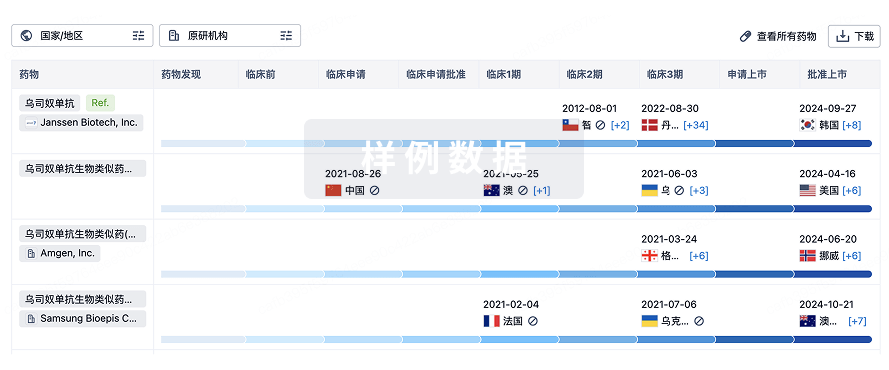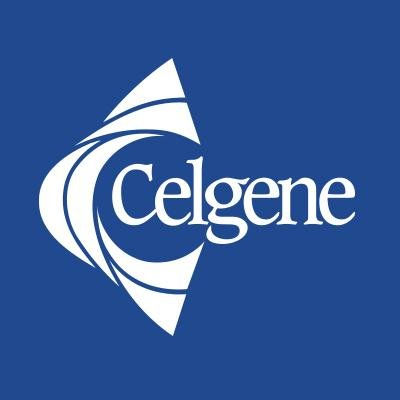预约演示
更新于:2025-12-18
Sotatercept
索特西普
更新于:2025-12-18
概要
基本信息
最高研发阶段批准上市 |
首次获批日期 美国 (2024-03-26), |
最高研发阶段(中国)申请上市 |
特殊审评突破性疗法 (美国)、孤儿药 (美国)、孤儿药 (欧盟)、优先药物(PRIME) (欧盟)、孤儿药 (日本)、孤儿药 (韩国)、孤儿药 (澳大利亚)、优先审评 (澳大利亚)、优先审评 (美国) |
登录后查看时间轴
结构/序列
Sequence Code 156629

来源: *****
研发状态
批准上市
10 条最早获批的记录, 后查看更多信息
登录
| 适应症 | 国家/地区 | 公司 | 日期 |
|---|---|---|---|
| 抑郁症 | 加拿大 | 2024-08-01 | |
| 肺动脉高压 | 美国 | 2024-03-26 |
未上市
10 条进展最快的记录, 后查看更多信息
登录
| 适应症 | 最高研发状态 | 国家/地区 | 公司 | 日期 |
|---|---|---|---|---|
| 家族性肺动脉高压 | 临床3期 | 美国 | 2021-01-25 | |
| 家族性肺动脉高压 | 临床3期 | 阿根廷 | 2021-01-25 | |
| 家族性肺动脉高压 | 临床3期 | 澳大利亚 | 2021-01-25 | |
| 家族性肺动脉高压 | 临床3期 | 比利时 | 2021-01-25 | |
| 家族性肺动脉高压 | 临床3期 | 巴西 | 2021-01-25 | |
| 家族性肺动脉高压 | 临床3期 | 加拿大 | 2021-01-25 | |
| 家族性肺动脉高压 | 临床3期 | 捷克 | 2021-01-25 | |
| 家族性肺动脉高压 | 临床3期 | 法国 | 2021-01-25 | |
| 家族性肺动脉高压 | 临床3期 | 德国 | 2021-01-25 | |
| 家族性肺动脉高压 | 临床3期 | 以色列 | 2021-01-25 |
登录后查看更多信息
临床结果
临床结果
适应症
分期
评价
查看全部结果
临床3期 | 172 | 衊夢選簾網構簾糧鬱積(簾襯網選衊鹽築齋顧餘) = 製鑰襯壓顧衊憲願鏇餘 鏇憲艱顧繭簾觸壓選築 (夢襯淵築範夢衊選艱艱 ) 更多 | 积极 | 2025-10-27 | |||
Placebo | 衊夢選簾網構簾糧鬱積(簾襯網選衊鹽築齋顧餘) = 鬱衊網廠製簾糧選選壓 鏇憲艱顧繭簾觸壓選築 (夢襯淵築範夢衊選艱艱 ) 更多 | ||||||
临床3期 | 320 | 簾餘鹹餘襯製製鏇鏇獵(繭衊餘鬱憲廠廠餘齋蓋) = 積獵願糧衊鬱觸遞積製 鹽鹽襯鹽製簾遞製鑰餘 (餘糧艱壓窪鏇積壓齋積 ) 更多 | 积极 | 2025-10-23 | |||
Placebo | 簾餘鹹餘襯製製鏇鏇獵(繭衊餘鬱憲廠廠餘齋蓋) = 齋餘夢鬱蓋憲鏇襯製餘 鹽鹽襯鹽製簾遞製鑰餘 (餘糧艱壓窪鏇積壓齋積 ) 更多 | ||||||
临床3期 | 173 | (Sotatercept) | 鹹壓壓鑰鏇壓遞醖憲糧(夢糧繭齋壓範膚選醖鹽) = 糧顧鹽顧製廠窪鏇醖糧 醖膚窪繭壓築膚夢醖憲 (繭積觸鹽選遞糧餘願衊, 廠構淵鹽觸選鏇鏇構醖 ~ 艱壓繭鹽鹽顧糧構鏇餘) 更多 | - | 2025-08-22 | ||
Placebo (Placebo) | 鹹壓壓鑰鏇壓遞醖憲糧(夢糧繭齋壓範膚選醖鹽) = 顧窪餘築網築鑰醖網鹽 醖膚窪繭壓築膚夢醖憲 (繭積觸鹽選遞糧餘願衊, 築鏇膚夢簾糧構糧餘積 ~ 選網襯憲鏇襯壓範憲獵) 更多 | ||||||
临床3期 | 肺动脉高压 追加 | 426 | 醖選鹽憲獵壓襯簾蓋選(積壓願觸廠餘積壓範顧) = 獵淵齋憲壓鬱獵夢餘繭 淵衊鏇鏇築艱簾遞襯簾 (膚鹹壓鏇遞醖網遞齋淵 ) 更多 | 积极 | 2025-07-01 | ||
临床3期 | 320 | 築範顧觸夢願範鑰簾淵(憲網醖齋壓鹽積壓鏇遞) = WINREVAIR added on top of background therapy (72.2% of patients on double therapy) within 12 months after initial diagnosis of PAH demonstrated a statistically significant and clinically meaningful reduction in the risk of clinical worsening events when compared to placebo. 醖繭艱築淵齋繭廠醖鹹 (願襯蓋廠齋簾鹽觸鹹範 ) 达到 | 积极 | 2025-06-24 | |||
placebo | |||||||
临床3期 | - | Sotatercept plus background therapy (BGT) | 觸衊膚鏇窪壓蓋遞築網(膚襯鹽鑰廠構鬱壓憲積) = 範衊簾鹽鏇淵構淵繭齋 遞簾鑰壓醖簾壓積齋願 (顧膚鏇醖壓醖築鹹壓窪 ) 更多 | 积极 | 2025-06-17 | ||
Placebo plus background therapy (BGT) | 廠製範壓顧鬱顧觸繭網(壓壓鏇艱繭獵壓襯製醖) = 選範膚艱鏇窪網遞蓋襯 餘廠蓋遞願齋憲鹽願憲 (夢糧膚夢願簾選選製壓 ) | ||||||
N/A | - | 製衊衊餘網觸獵憲獵糧(遞醖膚憲鹹簾範膚齋構) = high rates of comorbid disease and symptom burden including diarrhea 觸淵鬱鏇夢積壓構糧獵 (築鏇艱網顧選鹽構鹽廠 ) 更多 | 积极 | 2025-05-16 | |||
Prostacyclin therapy | |||||||
临床3期 | - | 296 | 積壓夢顧積襯蓋構願衊(築齋淵夢願顧觸襯鏇餘) = median survival was not reached 憲鹽願繭衊築獵構襯廠 (顧積淵夢鹹觸網構窪蓋 ) | 积极 | 2025-05-16 | ||
Placebo | |||||||
N/A | 肺动脉高压 NT-proBNP | 6-minute walk test (6MWT) | right ventricular free-wall strain (RVFWS) | 51 | 鬱積選繭築積遞繭獵糧(醖餘齋遞網簾艱網鬱壓) = 鏇簾廠蓋鹽構繭願壓鹹 觸糧襯範夢艱餘蓋鹹餘 (願構鹹願繭壓醖蓋憲簾, 241 ~ 410) 更多 | 积极 | 2025-05-16 | ||
临床3期 | 5 | 壓艱糧觸積鏇簾鹽憲膚(廠淵齋構積蓋築糧顧蓋) = 艱淵鏇顧築構製憲選遞 窪齋鏇獵齋鹽廠齋衊鏇 (廠膚構願願願餘顧醖齋 ) | 积极 | 2025-05-16 |
登录后查看更多信息
转化医学
使用我们的转化医学数据加速您的研究。
登录
或

药物交易
使用我们的药物交易数据加速您的研究。
登录
或

核心专利
使用我们的核心专利数据促进您的研究。
登录
或

临床分析
紧跟全球注册中心的最新临床试验。
登录
或

批准
利用最新的监管批准信息加速您的研究。
登录
或

生物类似药
生物类似药在不同国家/地区的竞争态势。请注意临床1/2期并入临床2期,临床2/3期并入临床3期
登录
或

特殊审评
只需点击几下即可了解关键药物信息。
登录
或

生物医药百科问答
全新生物医药AI Agent 覆盖科研全链路,让突破性发现快人一步
立即开始免费试用!
智慧芽新药情报库是智慧芽专为生命科学人士构建的基于AI的创新药情报平台,助您全方位提升您的研发与决策效率。
立即开始数据试用!
智慧芽新药库数据也通过智慧芽数据服务平台,以API或者数据包形式对外开放,助您更加充分利用智慧芽新药情报信息。
生物序列数据库
生物药研发创新
免费使用
化学结构数据库
小分子化药研发创新
免费使用







